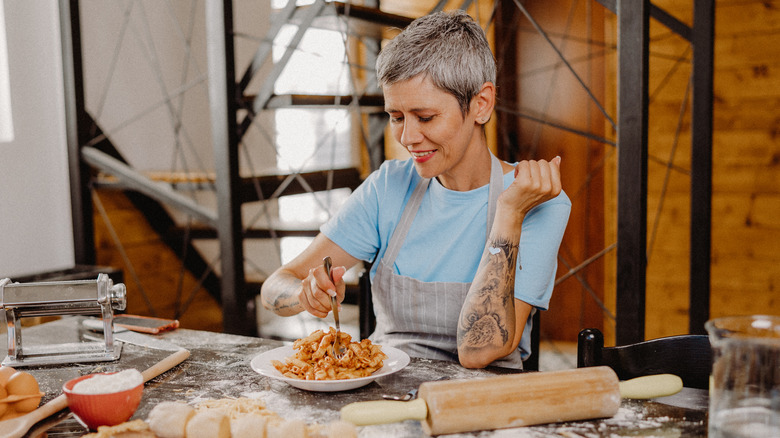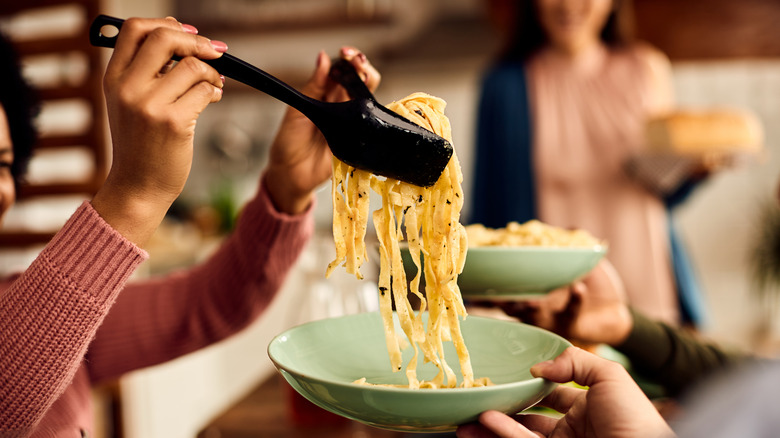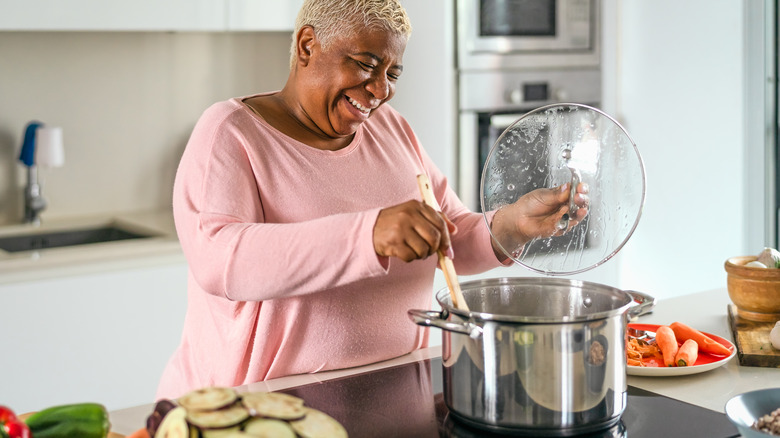The Healthiest Way To Eat Pasta If You're 50 Or Older
Olive Garden's Never-Ending Pasta Bowls might have been a great dinner deal 30 years ago, but now that you're in your 50s, unlimited pasta can lead to unwanted weight gain. As you check the box of a new age bracket, your metabolism begins to slow due to hormonal changes and gradual muscle loss. That might mean cutting 200 calories a day just to stay the same weight.
Aside from the high-calorie count of eating a lot of pasta, people over 50 should limit refined grains from their diet. Refined grains tend to be high in the glycemic index (GI), which quickly raises your blood sugar and increases your risk for inflammatory diseases, according to a 2010 article in the American Journal of Clinical Nutrition. Compared to women who choose low GI foods, women whose diet is high in GI foods are three times more likely to die of an inflammatory disease.
A 2020 article in Alzheimer's and Dementia found that diets high in refined carbs may increase your risk of dementia and Alzheimer's. You're also more likely to develop frailty in older age if you eat a lot of simple carbs, according to a 2022 study in the Journals of Gerontology. You can still enjoy your pasta if you're over 50, but you'll have to make some healthy adjustments, such as adding protein.
Ways to lower the glycemic load of pasta
Pasta has a GI of 50, which is considered low, but that doesn't mean it has little impact on your blood sugar. Glycemic load (GL) considers how much carbohydrate is in a portion of the food, so a larger serving of a low GI food can still cause your blood sugar to rise. Pasta has a moderate glycemic load of 15.4. Rather than eat two cups of pasta, you can reduce the glycemic load of your meal by adding a cup of diced chicken. Chicken and most unprocessed proteins have a GL of 0.
Many refined grains made from white flour don't have the same nutrients and fiber as whole-grain pasta. Whole wheat pasta's GL is 10.6 and has more than 4 grams of fiber. How long you cook your pasta also affects its GI and ultimately the GL. Cooking your pasta al dente so it still has a bit of a bite reduces the GI to 34. If you boil your pasta too long, you're bumping it to 64.
Other ways to make pasta healthier
Freshly cooked pasta might taste divine, but you can slow down its effect on your blood sugar if you let it cool. When pasta and other starches are cooled, their chemistry changes to become resistant starch. Your digestive enzymes have a harder time breaking down this pasta, so cold pasta doesn't have the same effect on your blood sugar. Don't think that you always have to eat cold pasta. Reheating cold pasta raises your blood sugar even more slowly. This is also the case for hot rice, where you can reheat it to increase its resistant starch.
Adding vegetables to your pasta dishes provides vitamins, minerals, and phytochemicals that can improve your health and manage your blood sugar and insulin levels. Try adding some spinach to your pasta sauces to add fiber, potassium, magnesium, and antioxidants. Olive oil can make your pasta taste rich while adding omega-3s to improve your heart, brain, and skin health. Flavoring your pasta with too much salt can increase your blood pressure, so replace sodium with herbs such as basil, rosemary, or parsley.


